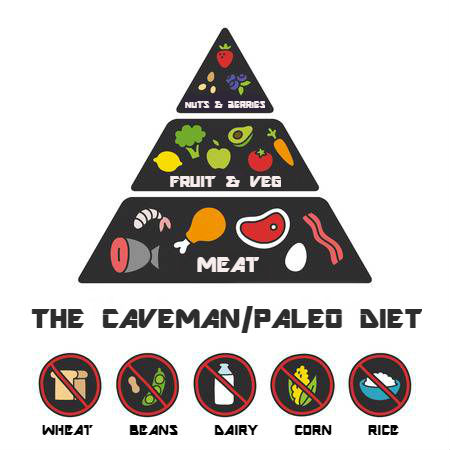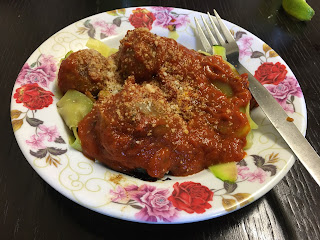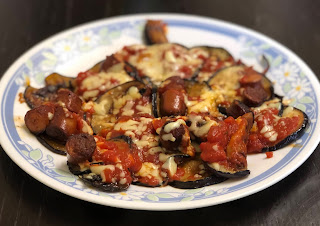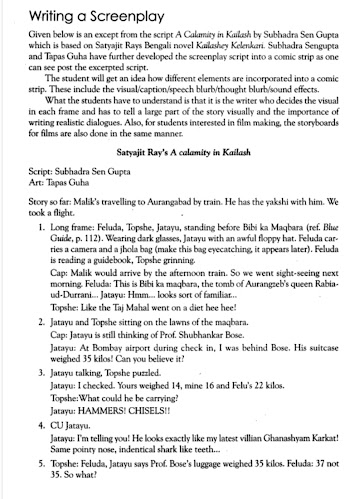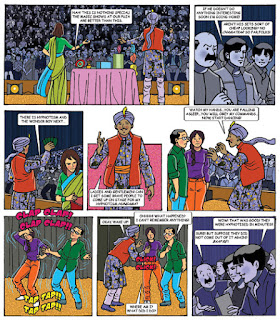Like most Bengalis, I am a self-confessed, unabashed detective fiction buff. Think Satyajit Ray’s Feluda, Sharadindu Bandyopadhyay’s Byomkesh Bakshi, Samaresh Basu’s Arjun, Sukanta Gandopadhyay's Deep Kaku and Suchitra Bhattacharya’s Mitin Mashi. These are my staple non-work reading (or more truthfully actually "listening" thanks to the scores of YouTube content creators). Click on the links to read my posts profiling them.
While consuming their cases, a thought has been meandering in my head for a while now – are detectives and management consultants, not similar professionals? Think about it. The great Sherlock Holmes used to call himself a "consulting detective".
As a management consultant, I thought that I was almost a private investigator of sorts. (Or maybe I was being self indulgent to justify why I was finessing a slide at 2 am in the morning for the 247th time that day!) Anyway, I do think the similarities are striking. Here’s how:
1) Both work on cases: Yes, engagements or ‘studies’ as we called them at McKinsey are called ‘cases’ in some firms! "Case study" rings a bell?
2) The client pays the bill: Both need to be hired by clients. Often solving the problem for one client drives future referral business from the same client or their acquaintances. Therefore the fundamental need to develop top-notch “client leadership”. They also need to be “trusted advisors” and often take their clients’ secrets to their grave. Discretion is a core virtue of both.
3) The methodology employed is hypothesis driven problem solving: Both professionals are Satyanweshis or "Seekers of Truth". Therefore, like all management consultants worth their salt, detectives also employ the same hypothesis driven problem solving approach to solve cases based on threading together facts. This includes doing 5 things well:
a. Starting with a sharp problem statement: The problems both solve are often nebulous and need the articulation of a sharp upfront problem statement – what are we trying to solve for here. In the case of detectives, that is hypothesising about the motive.
b. Diligent fact gathering: The magnifying glass cliché aside, both have to rely on extensive factual evidence that is often “unsexy” but necessary to the crack the problem. The gathering of data has to be systematic and efficient.
c. High quality interviewing skills: A core part of fact gathering is interviewing clients and stakeholders. This is taught to every business analyst and junior associate as a core skill of the consultant toolkit. Same I guess for the rookie detective. The way to get your facts is to ask the right questions in the right way.
d. Ability to thread (pun intended) all the pieces of evidence: Both need to be able to have the ability to join the dots between the facts and the underlying insights they reveal to solve their respective cases.
e. Producing a "storyboard": Solving the problem is incomplete without being able to articulate the story in a precise, simple and logical manner - a "dot-dash" as we called it at McKinsey. Look up pyramid principle.
4) Collaboration is the key to success: Private investigators often need to work with police without upsetting the apple cart. They also need to rely on the police forensics team for help and tap into their broader group of friends to get information about the case they are working one. Stakeholders and experts. This is familiar to all consultants as the need to build a “stakeholder map” and have distinctive “people leadership”. And need to reach out to industry experts once in a while to "get smart" about market facts. $1000 GLG calls.
BTW, truly successful detectives and consultants also are very influential by virtue of being connected with those in power. Think Sherlock being sought after by the government for sensitive matters. Similarly Byomkesh.
5) Cannot thrive without having excellent communication (and the penchant for drama): Both need to be great communicators often having to rely on top-down communication to help the clients understand the “so whats”. Think of the final reveal at the end of the mystery novels as the final board meeting to get sign-off on the strategy paper… and the drama that comes along with it. And the alignment meetings in secret that are required to make sure that the final big one goes per plan.
6) Requirement to systematically codify knowledge: Both need to codify cases and learning to ensure that they don’t have the reinvent the wheel each time. They can solve the next case more efficiently leveraging their earlier body of work.
7) Need to stay updated with the latest "thinking" and market trends to aid problem solving: For consultants it may lead to talking about crypto, blockchain and AI at most inopportune times. And of course digital! Ha!
8) Reliance on publishing “thought leadership” pieces to enhance own brand: The truly great detectives like the great Sherlock Holmes is said to have published many monographs on topics “the use of disguise in crime detection”, “the utilities of dogs in detective work” and the “analysis of tobacco ashes”. Consultants do the same. Just type “COVID 19” and “New Normal” in your Google Search Bar. These thought leadership pieces are essential from establishing their brands as leading lights in their respective fields.
9) Terrible work-life balance: Burning the midnight oil, downing copious amount of coffee (and other beverages), pull all-nighters on cases are common place for both professions sadly.
What do you think? A case of too much detective fiction?
BTW, if you think the above is a stretch of imagination, brace yourself for this wonderfully entertaining novel by Sameer Kamat called the "Business Doctors" where "Ivy League educated management consultant, Michael Schneider, gets hired by an unlikely client – a desperate mafia boss who wants to give a makeover to his family business that spans across gambling, drugs and porn. But the client's seductive wife and bumbling goons weren't part of the deal Michael signed up for."



